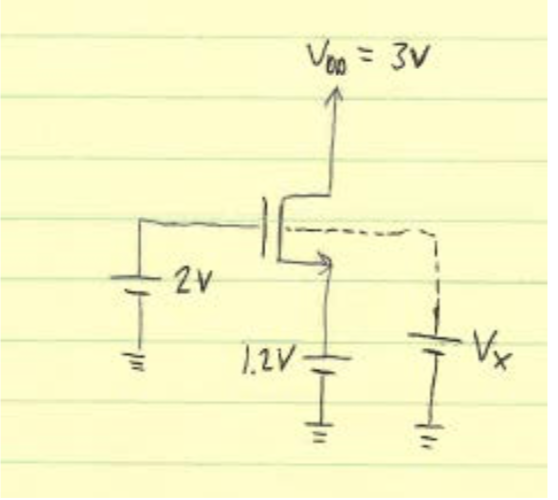I understand some formulas for determining whether a NMOS transistor is activeis VGS > Vth and if its in saturation you take the drain-to-source voltage VDS => VGS - Vth
But how does the substrate voltage play a part in determining this behavior? For example the image below
If I were to change the substrate voltage from 0 to 5V. Could I turn ON/OFF the transistor and affect the region of operation?

